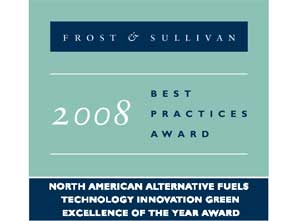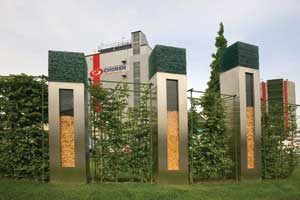December 2008
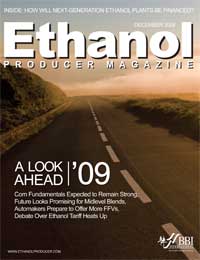 View Full Print Edition
View Full Print EditionBusiness Briefs
Columns

The Real Tie Between Food, Fuel Prices
By Mike Bryan

California Courts Reconsider Ethanol-Related Greenhouse Gas Issues
By Todd J. Guerrero

Year of the Rat, or Perhaps the Scapegoat
By Bob Dinneen

A Cautionary Tale
By Rona Johnson

Building a ‘Bioshed' Analysis
By Tim Portz

Dare I Say, 'Feeling Fine in '09'?
By Jessica Sobolik

New Resource Provides Methanol Handling Guidance
By Gregory Dolan
Featured
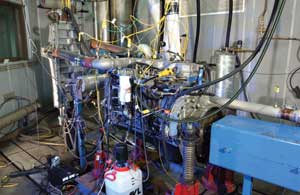
The Future of Midlevel Blends
By Erin Krueger
2009 could be a big year for midlevel ethanol blends. UL certified E85 fuel dispensers and blender pumps should be available by the first half of the year. In addition, Congress is expected to address tax legislation that limits fuel retailers' ability to claim credits for blender pumps distributing E85. Testing of midlevel blends will continue, and an E20 fuel waiver request could be submitted to the U.S. EPA before the end of the year.

Raising Cane
By Ryan C. Christiansen
Europe has an appetite for sustainable ethanol. Brazil is hungry to supply the demand.

Carbon as a Commodity
By Kris Bevill
Chances are the United States will bring into play a mandatory carbon emissions reduction program sooner rather than later. In the second of a two-part series, EPM explores the domestic carbon trading market and what the future could hold for ethanol producers.

Bankrolling the Next Generation
By Bryan Sims
The food-versus-fuel debate, high corn prices and the country's economic crisis have taken a toll on the corn-based ethanol industry. Despite its difficulties, the development of cellulosic ethanol wouldn't be where it is without its predecessor. Now it's just a matter of getting the necessary financing to commercialize the industry.

Fundamentals Remain Strong
By Susanne Retka Schill
Market gyrations can temporarily obscure the fundamentals. Although corn prices dipped in response to the flagging stock market, demand for corn should continue to pressure supplies. Ethanol producers also need to track crude oil prices as they have an increasingly important impact on prices. EPM talks to Iowa State University economists who have been plotting the numbers.

Pumping Up Profits With Retail Ventures
By Donna Funk
Building Blocks to Biofuels Success
By Jerry W. Kram
Federal support for ethanol has been crucial for the growth of the ethanol industry as it expanded from a regional specialty fuel to an energy source of national importance. As the transition begins from first-generation to second-generation fuels, the government has created a plan to continue to help the industry develop new feedstocks and technologies to fulfill the new renewable fuels standard.

Improving the Process Without Breaking the Bank
By Ron Kotrba
There are ways to boost a plant's bottom line without intense capital investment. EPM takes a look at the options available for ethanol producers to do just that.

The Road Ahead for FFVs
By Anna Austin
Automakers are expected to produce nearly 50 2009 flexible-fuel vehicle models, doubling their offerings from 2008. EPM examines the future of the flexible-fuel vehicle infrastructure and what each of these companies has to offer consumers who want to use ethanol blends.
Politicos Seek to Harmonize Tariff, Tax Credit
By Frank Zaworski
If the noise coming out of the Capitol in Washington, D.C., in late 2008 is any indication, the tariff on imported ethanol appears to be in danger, or at least subject to significant modification.
Reinventing the Mill
By Anna Austin
The weak U.S. economy, high-priced inputs and low-priced imports have forced many U.S. pulp and paper mills to downsize or close. At one time, transforming these mills into biorefineries looked to be a promising approach. Is the biorefinery still a viable concept that can save aging pulp and paper mills?
The Next Hot Commodity?
By Ryan C. Christiansen
The market for biomass is getting ready to embrace exchange-traded commodities.

Using Biomass to Weather Colorado Winters
By Jerry W. Kram
Tiny Oak Creek, Colo., faces harsh winters and an ever increasing fossil fuel bill to keep its 600 homes and businesses warm. A newly established wood pellet producer thinks he has a way to cut the town's fuel bill.
Biofuels Advance
By Bryan Sims
Interest in biomass-based fuels has intensified since the Energy Bill was passed mandating the use of millions of gallons of advanced biofuels. At the Advanced Biofuels Workshop & Trade Show held recently in Minneapolis it was clear that the race to commercialization is on and all signs indicate progress is being made.

Sizing Up the Soybean Market
By Susanne Retka Schill
New currents are influencing the soybean market-crude oil has a bigger influence than ever before, the relationship with corn is changing, global food and feed demand growth is slowing while U.S. food use declines.

Transition Period
By Ron Kotrba
The federal renewable fuels standard calls for 500 million gallons of biomass-based diesel to be used in 2009. Many questions remain as to how this will play out.

Politics, Prices and Public Support
By Kris Bevill
The biodiesel industry survived a tough 2008 and can look forward to a new year full of challenges and opportunities. Biodiesel Magazine spoke with industry representatives about the major issues facing biodiesel producers in 2009 and how they plan to address those concerns.

Glycerin's Role in 2009
By Erin Krueger
Glycerin markets are expected to remain volatile throughout 2009. Factors such as the global economic crisis and falling commodity prices are expected to have an impact on pricing, supply and demand for crude and refined glycerin. In addition, crude glycerin imports from Southeast Asia, Europe and Argentina may continue to pressure prices.

Bees Essential for Biodiesel
By Anduin Kirkbride McElroy
Pollinators are vital to agriculture yet are often taken for granted. The number of pollinators has been steadily declining, a dismal prospect that could have unexpected consequences for oilseed crop production and bioenergy as a whole.
Contributions

Family Transport Business Expands in Midwest
By Tom Stone
Emerging Waste/Coproducts Optimization Opportunities for Ethanol Facilities
By Philip A. Marrone, Kenneth R. Liberty and David J.
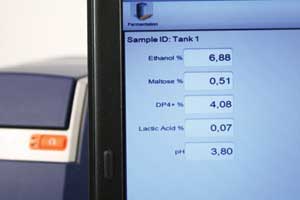
FTIR Offers Push-Button Fermentation Control
By Richard Mills

Bioenergy in Action
By Crystal Luxmore
The Canadian Bioenergy Association's annual conference and trade show, held recently in Ottawa, testified to the rapid industry momentum experienced in 2008.


